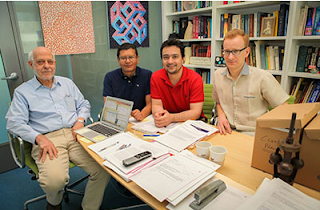IOP is a force for physics at NI Science Festival
A conversation between professors Jim Al-Khalili and Dame Jocelyn Bell Burnell, a lecture on quantum biology by Al-Khalili and a digital creativity workshop were among the sessions offered by the IOP in Ireland at the NI Science Festival.
IOP is a force for physics at NI Science Festival
The festival ran across more than 25 venues in Northern Ireland from 18 February with events including talks, debates, theatre, music, film and interactive sessions offered by a range of organisations, and finished on 26 February.
Labels: SCIENCE















